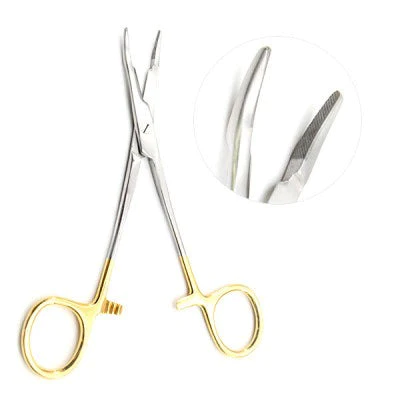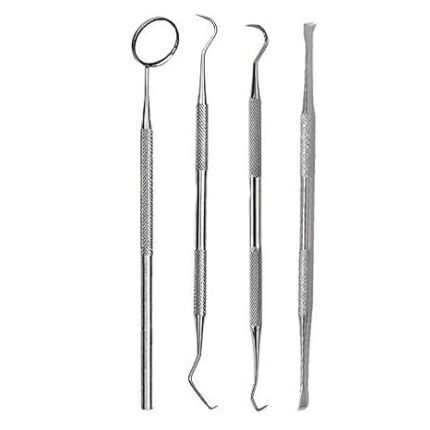Orthodontic Distal End Cutter Orthodontic Dental Treatment Instrument
Made from premium stainless steel, this durable and corrosion-resistant instrument ensures a clean and precise cut without causing discomfort to the patient.
Category: DENTAL INSTRUMENTS
Tags: AffordableSurgicalTools, DentalEquipment, DentalExtraction, DentalExtractionForceps, DentalExtractionKit, DentalForceps, DentalInstruments, DentalProfessionalTools, DentalSurgery, DentalSurgeryTools, DentalTools, DentistInstruments, DentistryTools, OralCareInstruments, OralSurgeryInstruments, ProfessionalDentalTools, ProfessionalDentistSupplies, QualityDentalInstruments, ReliableDentalSuppliers, SetSurgicalExtractionKit, SurgicalDentalTools, SurgicalInstruments, SurgicalPrecision, ToothExtractionTools, ToothExtractors, TrustedDentalInstrumentation
Description
Description:
Introduction to Orthodontic Dental Treatment Instruments
Orthodontic dental treatment instruments play a crucial role in the field of dentistry, specifically in orthodontics. These instruments are designed to assist dental professionals in correcting teeth and jaw alignment, which can significantly improve a patient’s overall oral health and aesthetic appearance.
Understanding the Orthodontic Distal End Cutter
One of the essential tools in orthodontic procedures is the Orthodontic Distal End Cutter. This instrument is specifically designed for cutting the distal ends of archwires, ensuring that they are trimmed to the appropriate length for patient comfort and effective treatment.
Importance of the Distal End Cutter
The Distal End Cutter is vital for any orthodontist’s toolkit. By allowing for precise wire cutting, it minimizes the risk of injury to the patient. If wires are left too long, they can poke or irritate the cheeks and gums, leading to discomfort and potential complications.
Design and Features
The design of the Orthodontic Distal End Cutter is critical. Typically made from high-quality stainless steel, it offers durability and resistance to corrosion. The instrument features ergonomic handles that provide a comfortable grip, reducing hand fatigue during extended use.
Types of Orthodontic Dental Treatment Instruments
In addition to the Distal End Cutter, several other instruments are commonly used in orthodontic practices:
- Ligature Ties: Used for securing archwires to brackets, ensuring that the components of orthodontic appliances work together effectively.
- Band Pliers: Essential for placing and removing orthodontic bands that surround teeth.
- Bracket Placement Instruments: These are used to accurately place brackets on teeth, ensuring proper alignment and spacing.
Benefits of Using High-Quality Instruments
Investing in high-quality orthodontic instruments, such as the Distal End Cutter, offers numerous benefits. High-quality tools enhance precision, which is essential for successful orthodontic treatments. Additionally, they are more comfortable for practitioners, allowing them to perform procedures efficiently without causing strain or discomfort.
Best Practices for Usage
Using the Distal End Cutter properly is crucial for achieving the best outcomes. Here are some best practices:
- Regular Training: Ensure all staff members are trained in the correct usage of orthodontic instruments to maximize their effectiveness.
- Maintain Sterility: Always sterilize instruments before and after use to prevent infection.
- Inspect Instruments: Regularly check the cutter for wear and tear. Dull blades can lead to uneven cuts, affecting the treatment quality.
Maintenance and Care of Orthodontic Instruments
Proper maintenance of orthodontic instruments is essential to ensure their longevity and effectiveness. Here are some tips for caring for the Distal End Cutter and other instruments:
- Cleaning: Clean instruments immediately after use with an appropriate cleaning solution to prevent debris buildup.
- Sterilization: Follow the recommended sterilization protocols to ensure that all instruments are free from bacteria and viruses.
- Storage: Store instruments in a dry, clean place. Using protective cases can help avoid damage.
Conclusion
Orthodontic dental treatment instruments, especially the Orthodontic Distal End Cutter, are integral to the success of orthodontic treatments. By understanding their features, benefits, and proper care, dental professionals can enhance their practice and provide better care for their patients. Investing in high-quality tools not only improves patient outcomes but also elevates the overall efficiency of orthodontic procedures.
Reviews (0)
Be the first to review “Orthodontic Distal End Cutter Orthodontic Dental Treatment Instrument” Cancel reply
Shipping & Delivery


MAECENAS IACULIS
Vestibulum curae torquent diam diam commodo parturient penatibus nunc dui adipiscing convallis bulum parturient suspendisse parturient a.Parturient in parturient scelerisque nibh lectus quam a natoque adipiscing a vestibulum hendrerit et pharetra fames nunc natoque dui.
ADIPISCING CONVALLIS BULUM
- Vestibulum penatibus nunc dui adipiscing convallis bulum parturient suspendisse.
- Abitur parturient praesent lectus quam a natoque adipiscing a vestibulum hendre.
- Diam parturient dictumst parturient scelerisque nibh lectus.
Scelerisque adipiscing bibendum sem vestibulum et in a a a purus lectus faucibus lobortis tincidunt purus lectus nisl class eros.Condimentum a et ullamcorper dictumst mus et tristique elementum nam inceptos hac parturient scelerisque vestibulum amet elit ut volutpat.
Related products
Dental Needle Holder Standard Plier Orthodontic Tweezer Surgical Instrument Tools 14CM
The Dental Needle Holder Standard Plier is a 14cm surgical instrument designed for orthodontic and dental procedures. It features a precise grip for holding and manipulating needles during suturing, ensuring accuracy and control. This durable and reliable tool is essential for various dental surgeries and treatments.
Dental Orthodontic Pliers 110 How Crown Straight Dental Instruments with Serrated Tips – Wire Bending, Arch Forming, Crown Gripper Premium Quality
- ‣ 110 HOW CROWN STRAIGHT DENTAL PLIERS: The Dental Orthodontic Pliers 110 How Crown Straight by Rizbain Surgical are two handed instruments designed to grip, bend or hold wires and metal securely. These multipurpose dental pliers great to use to effectively place and remove pins, archwires, and other auxiliaries.




































Reviews
There are no reviews yet.